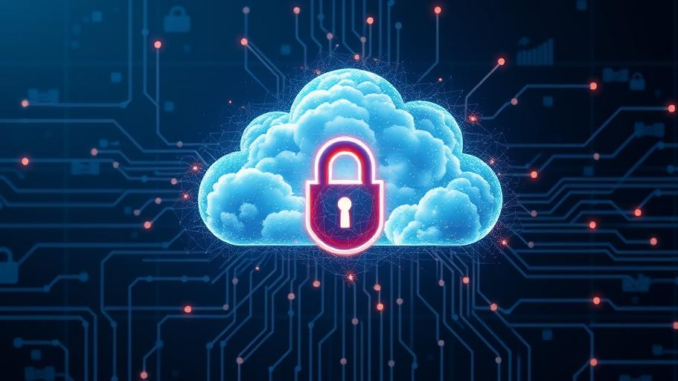
Summary
This article recaps a webinar on protecting cloud data, focusing on five key strategies: robust access controls, encryption, multi-factor authentication, regular backups, and security awareness training. These tips offer practical advice for businesses seeking to fortify their cloud data defenses against cyber threats. By implementing these measures, organizations can create a more secure cloud environment and protect sensitive data from unauthorized access.
Dont let data threats slow you downTrueNAS offers enterprise-level protection.
** Main Story**
Cloud storage has undeniably transformed business operations, offering unprecedented flexibility and accessibility. However, this convenience brings inherent security risks. In this piece, I’ll break down five key strategies, drawing from a recent webinar, to safeguard your cloud data in 2024 and beyond. These aren’t just suggestions; they’re proactive measures to defend against evolving cyber threats. After all, the threat landscape changes so quickly.
Access Control: Your Cloud’s Gatekeeper
Think of access control as the bouncer at your cloud’s exclusive club. If they aren’t on the list, they aren’t getting in. The webinar put a lot of emphasis on implementing robust access controls, particularly based on the principle of least privilege. What does that mean? Basically, give users only the permissions they absolutely need to do their jobs; nothing more. Role-Based Access Control (RBAC) helps to streamline this. Assigning permissions based on predefined roles within your company is efficient.
Limiting access minimizes potential damage from compromised accounts or insider threats. Plus, you need to regularly review user permissions and access logs to maintain a secure environment and ensure compliance with data governance policies. A bit of extra work, but it’s so worth it. Plus, strong access control helps with meeting those annoying regulatory requirements around data privacy.
Encryption: Shrouding Your Data in Mystery
Imagine your data is a valuable artifact, and encryption is the protective casing. It transforms data into an unreadable format, like a secret code, rendering it useless to unauthorized eyes. The webinar made it clear: encrypt data both in transit and at rest.
Encryption in transit protects data as it zips between your systems and the cloud. While encryption at rest secures data while it’s sitting in cloud storage. Consider using strong encryption algorithms, like AES-256, and managing encryption keys securely. Some companies use cloud providers’ encryption services. Others invest in Hardware Security Modules (HSMs) for total control over encryption keys. What you do depends on your needs.
Multi-Factor Authentication (MFA): Adding Layers of Protection
Let’s face it, passwords alone? They’re about as effective as a screen door on a submarine. Multi-factor authentication (MFA) adds extra layers of security by requiring users to provide multiple forms of verification. You know the drill: password, code from an app, fingerprint…the works.
MFA dramatically reduces the risk of unauthorized access, even if a password gets compromised. So, encourage your employees to use MFA on ALL cloud accounts. Passwordless authentication methods like biometrics or security keys offer even greater security. This is something I am quite passionate about, and am actively working on with my team to implement.
Regular Backups: Your Safety Net
Regular backups are your parachute, your life raft, your “get out of jail free” card. No matter the metaphor, the message is the same: Backups are essential for disaster recovery and business continuity. Regularly back up cloud data to a completely separate location. Cloud security is not just about reacting to attacks, it’s about mitigating risk through proactice, future proof practices. This way, if there is a ransomware attack, accidental deletion, or a unforeseen disaster? You can actually recover your data.
You need a comprehensive backup strategy including regular backups, automated processes, and secure backup storage. It’s also important to regularly test those backups, just to make sure that they’re actually functional and restorable. No use having a parachute if it doesn’t open, right?
Security Awareness Training: Turning Employees into a Human Firewall
Your employees are both your biggest asset and potentially your weakest link in cloud security. Security awareness training is absolutely crucial. Educate them about phishing attacks, social engineering, malware; all the nasty stuff out there. Training should cover best practices for passwords, data handling, and spotting suspicious activity. I remember one time someone in our team clicked a dodgy link, luckily, we spotted it early and prevented a major breach. That was a real wake up call.
By empowering your team with security knowledge, you’re basically building a human firewall, one that can prevent many common cyberattacks. Regular training and awareness campaigns are the best way to build a security-conscious culture within your organization. In the end, your cloud security is only as strong as your weakest link. So, invest in your people, and they’ll help you protect your data.


The emphasis on security awareness training is spot on. Cultivating a security-conscious culture can significantly reduce human error, a common entry point for threats. How do you measure the effectiveness of your security awareness programs and adapt them to address evolving threats?